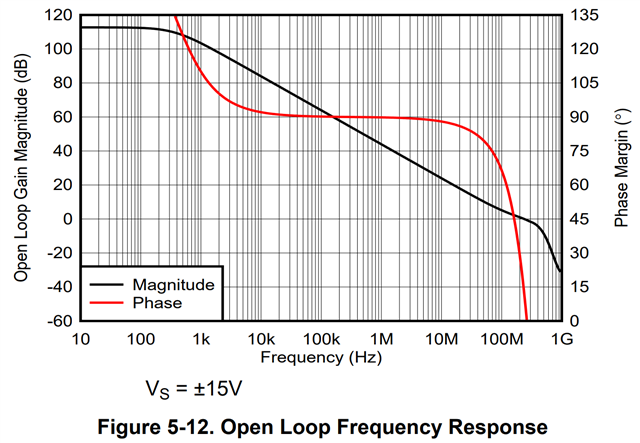Other Parts Discussed in Thread: THS4631
Tool/software:
I need to buffer a 0V to 16V sine wave (16V peak to peak with +8V offset) into a cable while minimizing loading on the signal source. I tried the THS4631 and LM7171A as unity-gain buffers in TINA TI and found that the LM7171A presents less loading to the driving circuit by comparing the input currents, so I am planning to use it. I do, however, see that the datasheet specifies a minimum gain of +2 or -1 (feedback factor of 0.5) for stability on this part, while the step response looks very clean in the simulator. Based on the open-loop gain/phase plot, this part should either be oscillating or badly ringing with unity-gain feedback (it's a bit hard to tell exactly what the phase margin is at crossover, but it's close to zero and I wouldn't count on it being stable across PVT variations). Why does the spice model disagree with the information in the datasheet gain/phase plot, and which is more trustworthy? Is the LM7171 known to be unity-gain stable as the spice model suggests?


